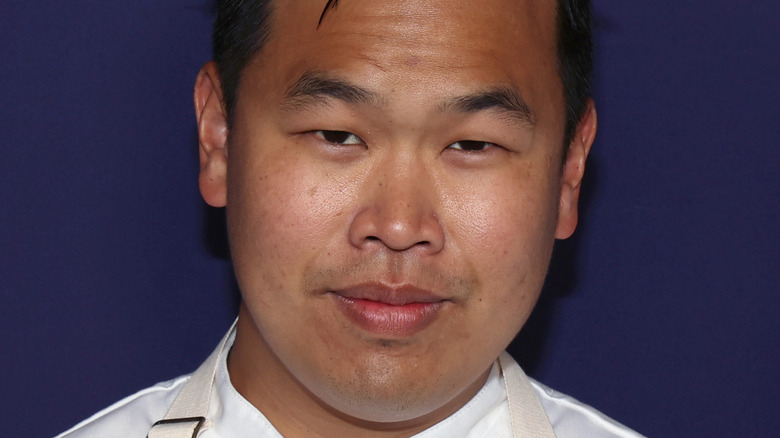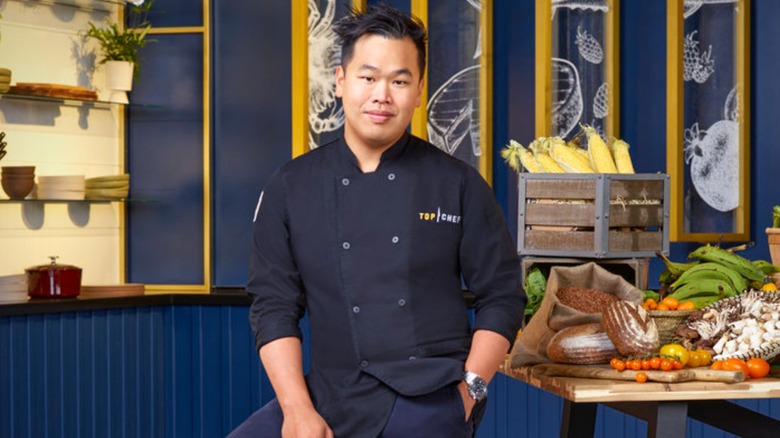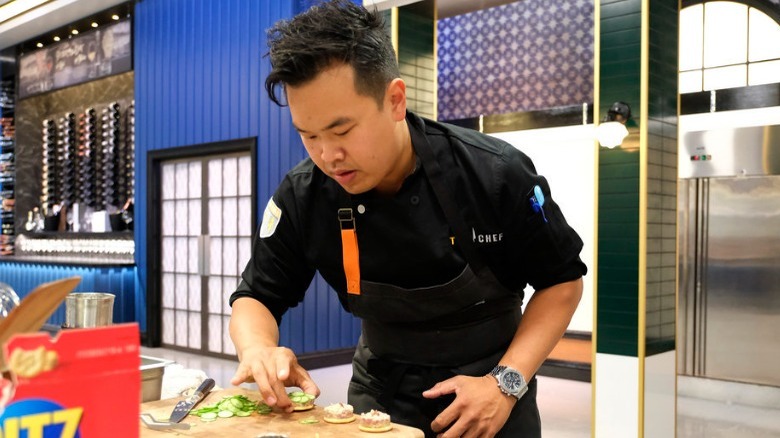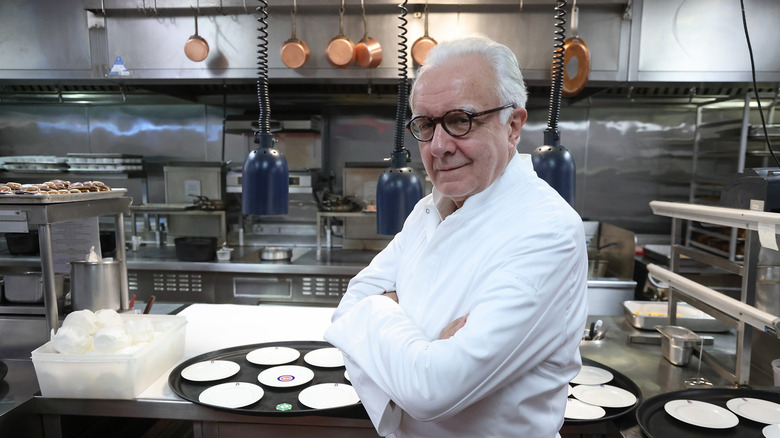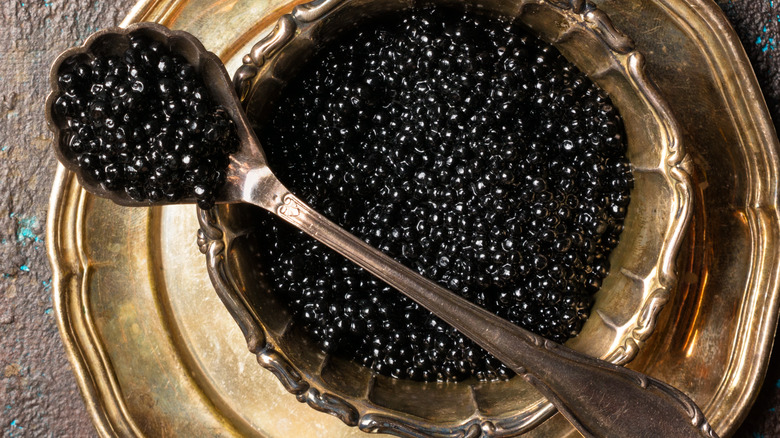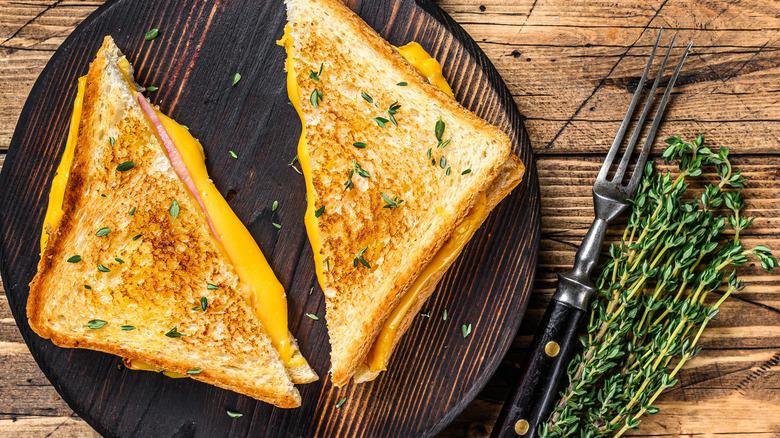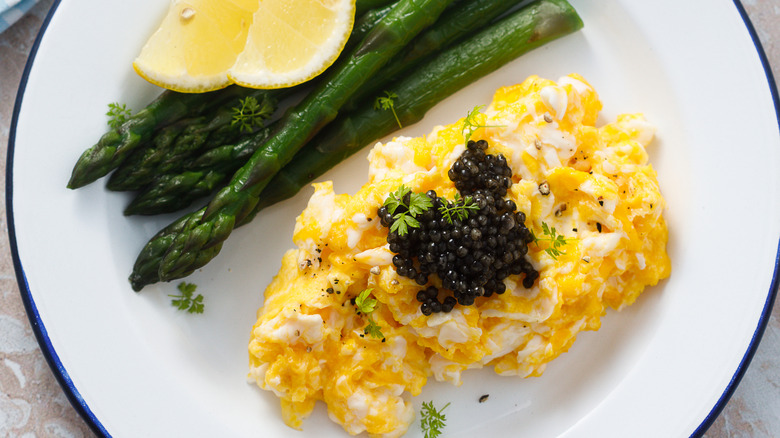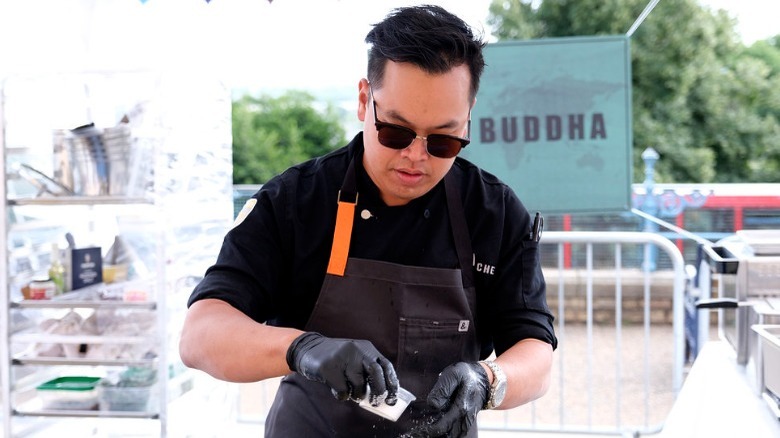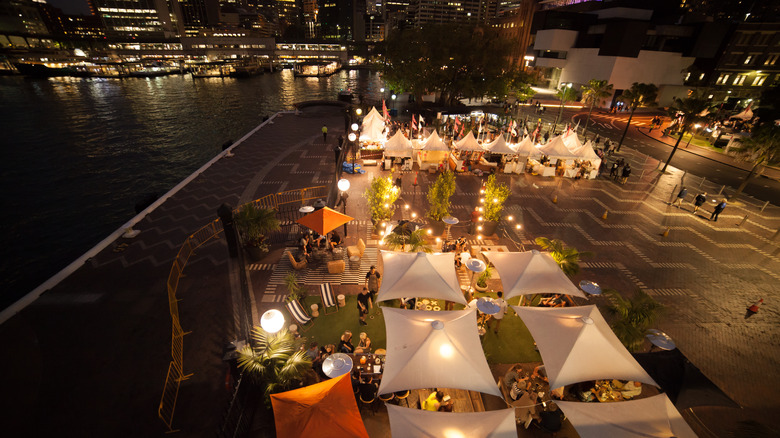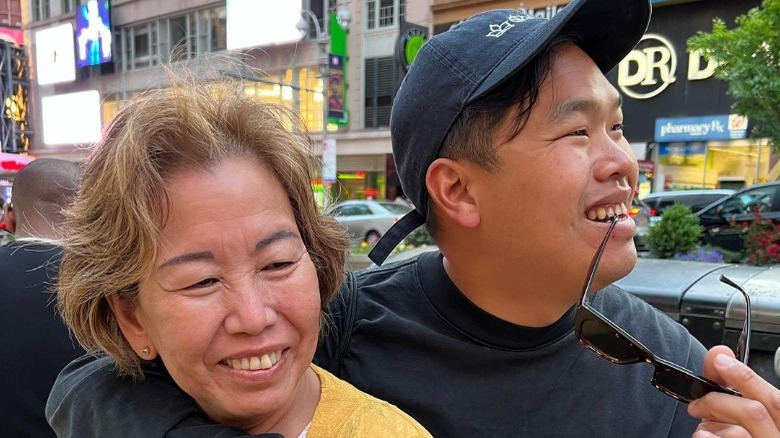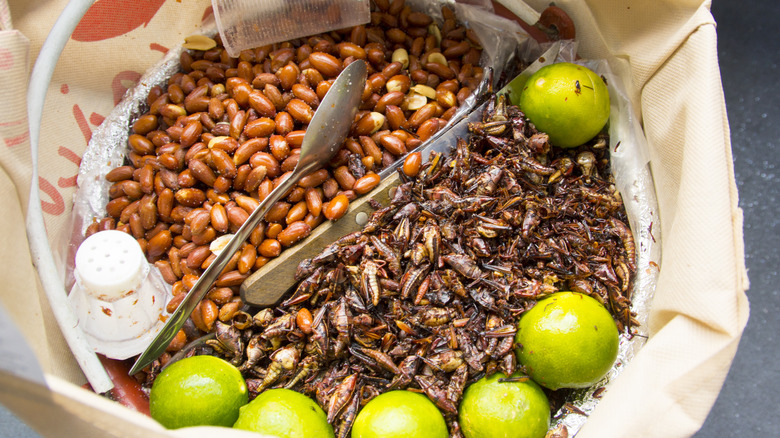Buddha Lo Told Us All About The 'Hometown' Pressure Of Top Chef Season 20 - Exclusive Interview
Buddha Lo is back on national television, striving to make Padma Lakshmi, Tom Colicchio, and Gail Simmons swoon over his dishes in Season 20 as they did in Season 19. "I think even more than other seasons, he really deserved to win because he was always flawless," Lakshmi gushed to E! News after Lo's win. The "Top Chef" champion didn't have more than a couple of months to absorb his new champion status, the growing popularity of the caviar-obsessed restaurant that he helms (Huso), or the fact that the American public is now intimately interested in his daily life. (For more on Lo's preferred hair products, footwear, and scooter of choice, please refer to The Strategist.)
Before long, he was jumping on a plane to London. Currently, you can tune in every Thursday night as Lo tests his knife amuse-bouche skills and demonstrates his mastery of pub fare along with other world champions. No pressure or anything, right? The "World All-Stars" kitchen is wildly different from what we've witnessed before — and best described by Lo himself. He does so in detail, gives us unmissable (and unusual) caviar tips, and talks about meeting Alain Ducasse in this exclusive interview.
Buddha Lo loved going back to Top Chef
Congrats on two consecutive seasons of "Top Chef." We've seen you in the preview holding your cool while other contestants are slipping and sliding around the kitchen. It begs the question, what was the atmosphere like in All-Star Kitchen?
All-Star Kitchen was like coming in[to] a warm cloud. I've missed the "Top Chef" kitchen, believe it or not. A lot of people don't want to ever do it again. They have a lot of fear. But it was like a dream come true. I could have a second go at it, but not only as a normal all-star [who has] lost, [but I've] already won the season before. I get to come back again. Usually [winning] eliminates you from ever coming back onto the show. ... It was incredible. The feeling was like ... I've had this feeling before when I haven't seen my wife for a long time, and then you finally see them at the airport. It was the same thing, returning to the "Top Chef" kitchen. ...
You've lived and worked in London before. Was that experience an advantage for you going in?
Yeah, I would 100% say that I feel comfortable in London [as] opposed to doing it in Houston. Houston was very good, but I've never been to Houston before. ... Houston food is completely different. They have different regions [and] different styles. If you look at Italian food as a whole, you think pizza, pasta, risotto, and all this other stuff. But when you start to go into the regional cuisine, it's like, "I have never seen this dish before ever." It's only native to Houston.
I've worked in London before, so I'm familiar with it. And coming from Australia, we're part of the Commonwealth, so our normal diet was actually some of the British staples — sausage rolls, meat pies, Sunday roasts, those sort of things. It was very similar. ...
Buddha Lo's biggest challenge on Top Chef Season 20
After Season 19, Padma Lakshmi went on record saying you deserved to win more than other winners in the past because your food was flawless. Was that added pressure going into Season 20?
Yes. The upside of going into the season is that you've done it before and you've won it before. The only problem is going back-to-back is an added layer of pressure because you are then forced to not do any dishes that you've done in the previous season. If you're looking at it, that's 26-plus dishes, [or] even more — 14 episodes, two challenges [each], and some challenges, I'm doing more than one dish. I don't want to repeat myself. If I've done a tart shell, I'm not going to do that again. If I've done the Pavlova, I can't do that again. I can't do the "Marry Me" pasta. It's not that I can't, and it's not that I'll get deducted; it's more for a personal challenge.
I've got this one shot of being on "Top Chef." I need to make sure that I show how versatile I am because I can come up with different dishes. But it [be]comes really hard [when there's] a pasta challenge [and] you're like, "I've got this good one, but I can't use it." It does become a challenge within a challenge.
I was talking to a couple of the people from the other seasons that are winners, and they were like, "I will bring out dishes that I won challenges with, no problem, because Padma, Tom, and Gail have not seen these dishes before. I can just whip out a winning dish from my season." ...
But it's very hard to access any of their seasons. [If you're in] the U.S. viewing, you'll be like, "Oh my god, what did they do?" A lot of the other [contestants] are like, "We stole that from another season, but [the U.S. audience doesn't] know that." That's where I have that hometown pressure of being the U.S. contestant.
Also, it was weeks after my final episode [of Season 19 when] I actually got called to go on for London, so I didn't get to extend my repertoire. I am literally coming in with the same knowledge that I came [into] Houston [with]. If you look at people like Amar or Sarah, they've had three or four years. [Actually,] Amar's had seven years because he won Season 13. [He was] continually developing different dishes by learning more about the dishes that are truly him. ... I can tell you right now, if I did "Top Chef" [Season] 30, it would probably be "Top Chef Universe." I have no idea; I would have a completely different set of dishes. ...
Buddha Lo talks meeting Alain Ducasse
Who do you see as your toughest challengers this season?
They're all very tough. I can't give too much away, but they're all extremely tough. ... All these people are very recent. One of the guys from the Middle East just won his season, and the guy from the Middle East before that won two seasons ago. The guy from France was three years ago, and so on. Nicole from "Canada: All-Stars" was the winner of "All-Stars" very recently. ... It's really cool to bring recent, current winners into it. Also, [when they're] international, you don't know who's coming in. You don't know if they're stacking up. The competition could be very tough.
We did see you out to dinner with Alain Ducasse on Instagram. He does make an appearance on "Top Chef" in Paris. No questions there about any correlation, but what was it like spending time with the legend?
I was not having dinner with him. It was a fangirl moment where one of the chefs that I know who's worked at the restaurant said, "We've got someone big coming in. [You'll] want to sit at the table with a couple of your friends." We're like, "Okay." So we sat at the table and were like, "Oh my god. It's the godfather." That photo was [when] we met the lead and we haven't even said anything, and we're like, "We've got to shoot our shot. Let's get a photo with him because this is our only time that we're going to be able to get it." So we did it.
It was a very special moment, for sure. Every chef dreams of getting that one photo with Alain Ducasse. We all sat in that corner hoping that we could shoot our shot for it, and it was very lovely, and he wanted to get a photo with us.
Buddha Lo's caviar pairings are unusual
For aspiring caviar chefs at home, can you teach us some ways to branch out and start thinking about working with caviar in different ways?
First of all, it's tasting the caviar by itself [and] tasting an array of different caviars. You would have it the more traditional way, and then you start to venture out. That sounds so simple, but that's my way exactly of being a chef. I won't start to break down any dishes or flavor combinations unless I actually know how to make [each one]. I did a barbecue beef bourguignon on Season 19. I would have not done that dish if I had not known how to make a beef bourguignon correctly, or a barbecue correctly. ...
With caviar, you have to taste it by itself [the] traditional way, but many start venturing ... Obviously, caviar elevates a lot of expensive food a lot, like wagyu. But the more interesting ones [are when you pair caviar with] very, very common foods, like the trend that [my colleague] Daniel did. It was Doritos and caviar. The other day, my wife [and I] had breakfast for her birthday. I did a full spread, but I also got some hash browns delivered into our house, and we had hash browns and caviar and scrambled eggs. Those sort of things are so tasty. ...
You do get to that point where you go, "Would I rather [have] that dish or [have it] with the caviar?" Most of the time, I'd rather have it with the caviar. I've had flan by [it]self, and it's really good, but with the caviar, it's like, "I need caviar on this from now on." It's so much of a difference. ... Caviar brings out a level which you wouldn't get [otherwise].
Buddha Lo's grilled cheese is a four-cheese affair
Your menu at Huso includes a black truffle grilled cheese. What is your number-one tip for taking such a basic, classic sandwich and elevating it into a five-star meal?
The grilled cheese is taking things from a lot of different places, different grilled cheeses between a slice of bread. ... One of the best cheese sandwiches in the world is a croque monsieur. Typically, the bechamel will be on top, but instead of doing something on top, we put it in the middle, so that becomes an added later of that cheesiness. We put [four] different styles of cheeses [in]: Comté, Muenster, sharp cheddar, and Parmesan.
Then we mix that together with truffle slices that have been marinated. ... It's preserved truffles, and that way, the truffles are always good all year round. We lay the slices into the grilled cheese sandwich, and then we toast it in really good French butter, and that's the truffle grilled cheese.
Why French butter?
French butter has got so much flavor. It's like the home of butter. We get our butter imported, and seriously, the butter by itself with some bread or crackers is amazing. That really elevates it, using quality products. We're not reinventing the wheel here. If you take all those things and sub out the processed cheese slices [with] real cheese, and [sub out] a slightly less expensive butter with really good butter, it makes a world of difference. ...
Buddha Lo spills his scrambled egg secrets
Let's talk about the scrambled eggs with crème fraîche that you have on your menu. I know Gordon Ramsay does it that way too. Give us your master class in scrambled eggs.
It's very similar [to Gordon Ramsay's]. There's not too much that changes it. It starts off with some good French butter, again.
I actually go to a florist in Chinatown. Believe it or not, the florist sells eggs. It's a double business. It's an egg and a flower shop. I swear, they have some of the best eggs in New York. I go into Chinatown to pick them up. The florist goes to Pennsylvania twice a week to go pick up these eggs.
We scramble them up [and] lightly season them because we are putting caviar on top. [We] make sure that the caviar serves a purpose in creat[ing] that experience. You can really feel that salinity from the caviar. Then we scramble it. We whisk it on medium heat the whole time, and once it's about 80% done, we do put in a spoonful of crème fraîche and keep whisking it again. It should be more like a soft polenta on the plate, rather than something that's hard scrambled.
Buddha Lo's latest food inspirations are unusual
You've talked about how your wife is great at discovering different food spots when you travel, and that you bring those discoveries and incorporate them into your dishes and menus. What's the last thing that you had on the road that inspired you?
It was actually ... The name of the salad is the name of the region. It's a Taichung salad. It's like a Russian ergot, where it becomes sort of Russia meets Asia, where they start to make dumplings instead of pelmeni. It was a veal tongue salad. They take veal tongue; they cook it; they julienne it, just like they do with the carrots and the cucumbers; [they add] mayonnaise; and then they put crispy shallots on top. It was incredible. I've never heard of a cold veal tongue salad before, but it was incredible, and [my wife] found it, once again.
We actually just went to this other restaurant, which was tucked away in the middle of nowhere in Flushing [New York]. It's off the beaten path, but it's another Northern China sort of restaurant. It's called Golden [Palace] Gourmet restaurant, and the food was phenomenal. They do this stir-fried eggplant with potatoes. Potatoes aren't usually a huge thing in Asian cookery, especially in stir-fries, so it was really interesting to see a stir-fried vegetable with crispy potatoes, and it was something a little chewy in it. ...
What you're getting wrong about Sydney's food scene
You once said that Sydney has maybe a better scene than even New York City. What are some of the biggest misconceptions you think that people have about Australian food that you've heard abroad?
Sydney is a very good food city all around. When it comes to food, it's so multicultural; it's diverse. I can name you a top-10 list, and it probably consists of 10 different cuisines. ... Just stay away from your stereotypes [that] things [in Australia] are probably hybrids of dishes. We still love those dishes, but we're more interested in learning more about the different cultures. There's a lot of Italians, a lot of Greeks [in Australia]. ... All these food places that start to open up in Sydney help with the food scene, because it's so diverse. And they do it really, really well. They do it exactly how they'll cook it back at home.
We're also very progressive. There's this one guy who I actually did a competition [with] probably about 10 years ago, and he wasn't that big back then. Now he's huge, and I really do think that he's [a] genius chef. A lot of people called me a genius, but I think that this guy is a genius of our generation. I don't think I could top his genius. His name is Josh Niland. He's like the fish god. I don't think I've ever seen anyone mind-blow the chef culinary world the way that he does. ...
The childhood experiences that inspired Buddha Lo's cooking
You talk about growing up in Mossman [Australia] and going to pick ants off of trees and eating them and foraging for your lunch. To what degree do you think those childhood experiences informed who you are as a chef today?
I was cooking with them before I was actually cooking. We had a huge fascination with fire as kids. We used to go into little areas and start picking up poles and starting fires, and we'd find it very interesting to start cooking with the fire. [It] opened my eyes to how things might seem a bit weird — to maybe [thinking differently about] the sort of stuff that we're eating. Indigenous people have been living off the land, and that's how they've survived for so many thousands of years, and it's so cool to watch how they do that. ...
[Indigenous people are] cooking stuff with soy sauce, which was very interesting because where I'm from in North Queensland is actually very close to Southeast Asia. [People] say that [the area] was probably found by the Spanish and the British first [after the Indigenous people. But] who knows how long the Asian connection [with] Australia was before [European settlers] even came, because a lot of [Indigenous] recipes [were] using a lot of soy sauce.
So, it was very interesting to see, because we'd cook a piece of dugong that was like a pork chop. A dugong is like a seal, and we'd cook that with a Southeast Asian kecap manis, which is like a sweetened soy, and it was very delicious. It's so good. It inspired me a lot as a kid, opening up my mind a little bit and going, "Yes, these flavors work." And [it inspired me to] be brave to try things. We're eating ants off of trees, and I've been doing that since I was six years old.
Buddha Lo predicts our culinary future
What do you think the future is for those ingredients — and insects particularly — in casual Western cuisine?
I would love to see that, but unfortunately, I think as time goes on ... I actually picked up a cookbook the other day that was from the 1800s at a friend's house. ... The first thing that came up was parrot pie. I don't think anyone's going to be eating parrots anytime soon, but 200 years ago, they were eating parrot pie. There was probably recipes for possum, recipes for squirrels, and all these sort of things.
There's a lot of things in the world that we can actually eat, but in the Western world, we don't. In Asian culture, they still at a lot of those different ingredients. If we look at Africa, they've been hunting down zebras. They've been hunting down giraffes. That's how they lived off the land. They're not protected animals. The Western world categorized our diet into major farming food groups — cow, pork, chicken, lamb. ... But if we go back 1,000 years, even a couple hundred years, we were eating a lot more than what we're eating now.
I feel like we're moving away from the ants [and] different animals. But that's just evolution. I don't see ground-up grasshoppers [at] a casual eatery with your burger. Let's just say that much. Or a zebra patty, or possum pie.
This interview has been edited for length and clarity.
Tune in and follow Buddha's journey. New episodes of "Top Chef: World All-Stars" air every Thursday at 9 p.m. ET/PT on Bravo and are available to stream the next day on Peacock.
